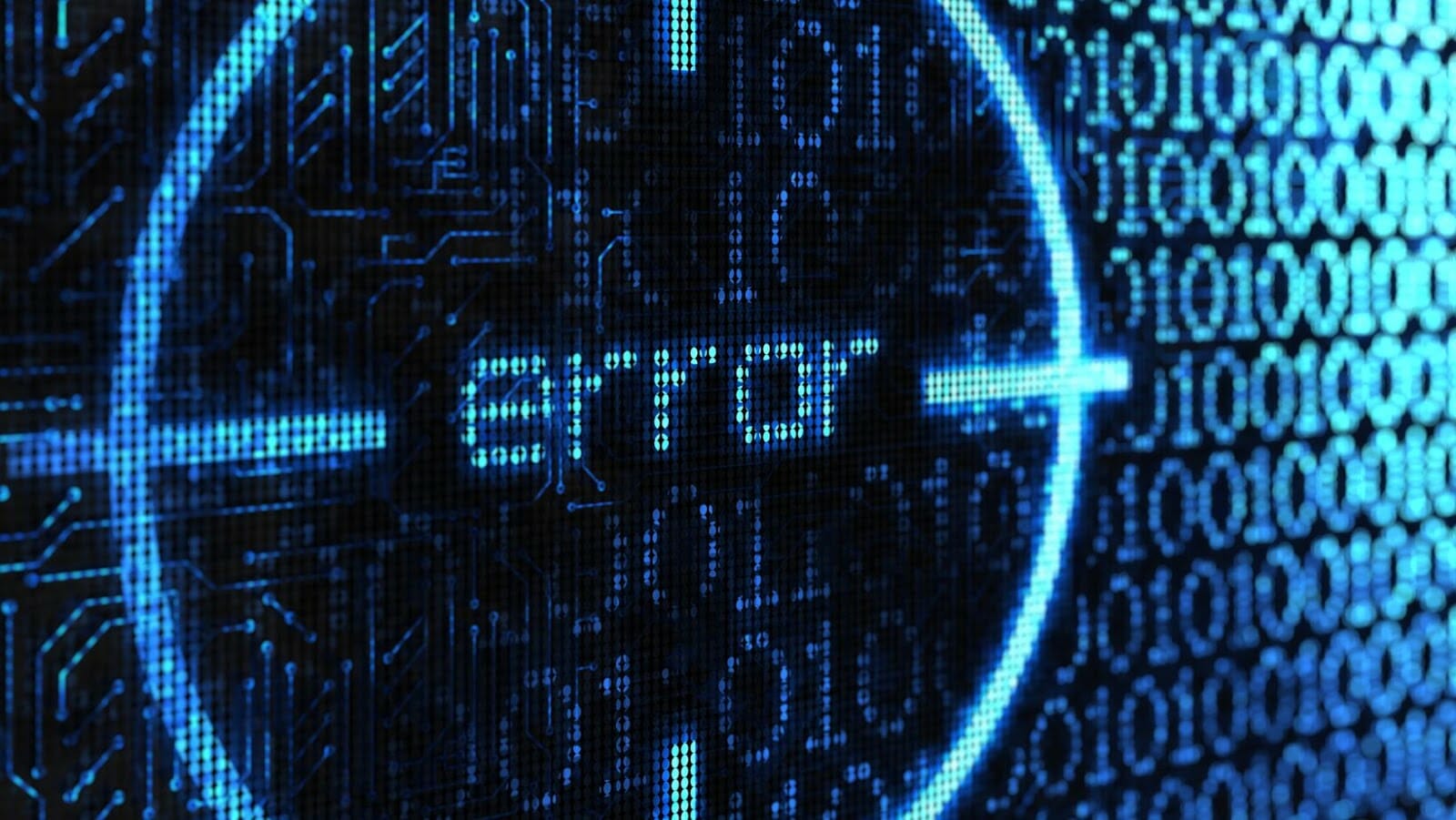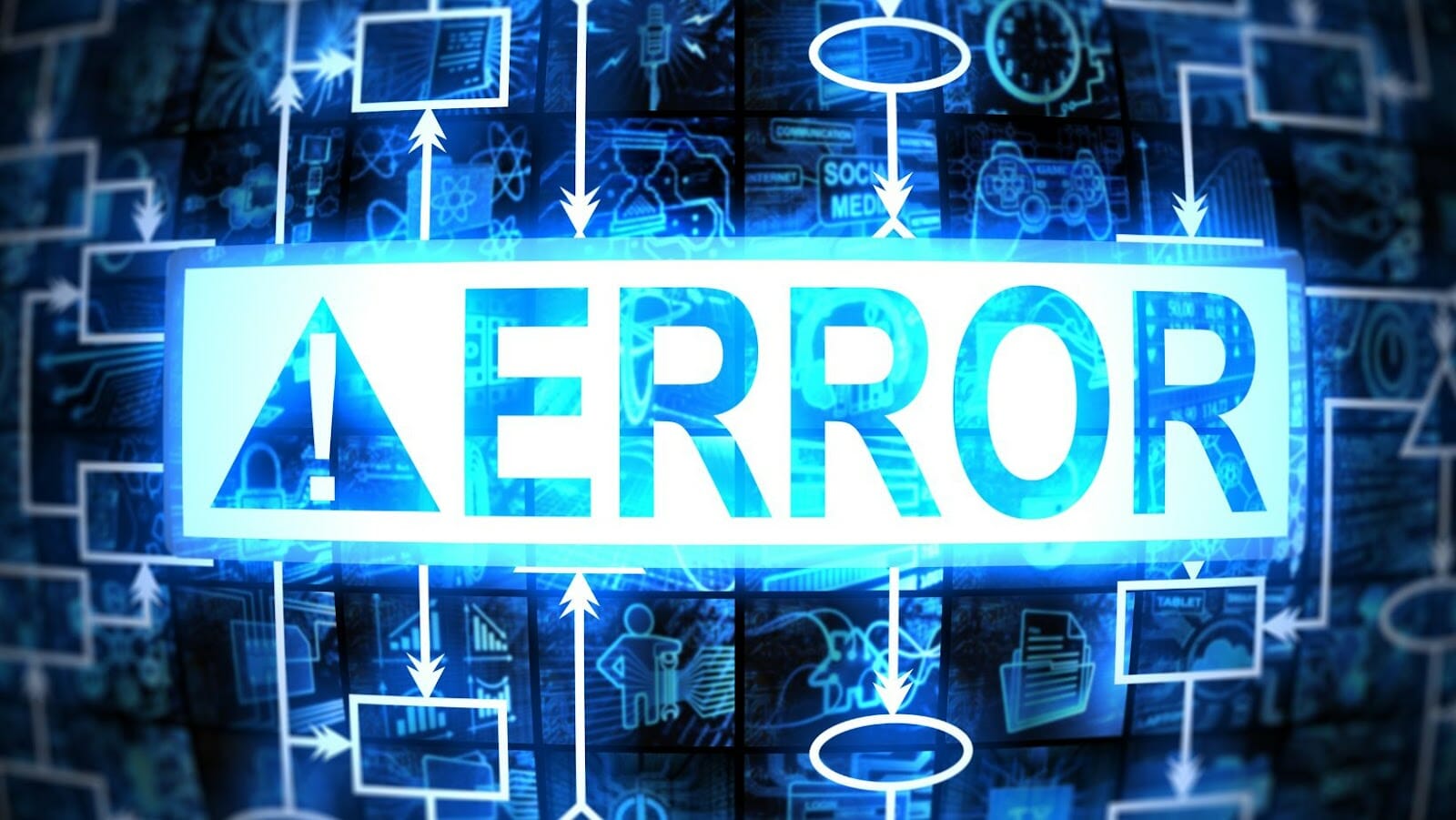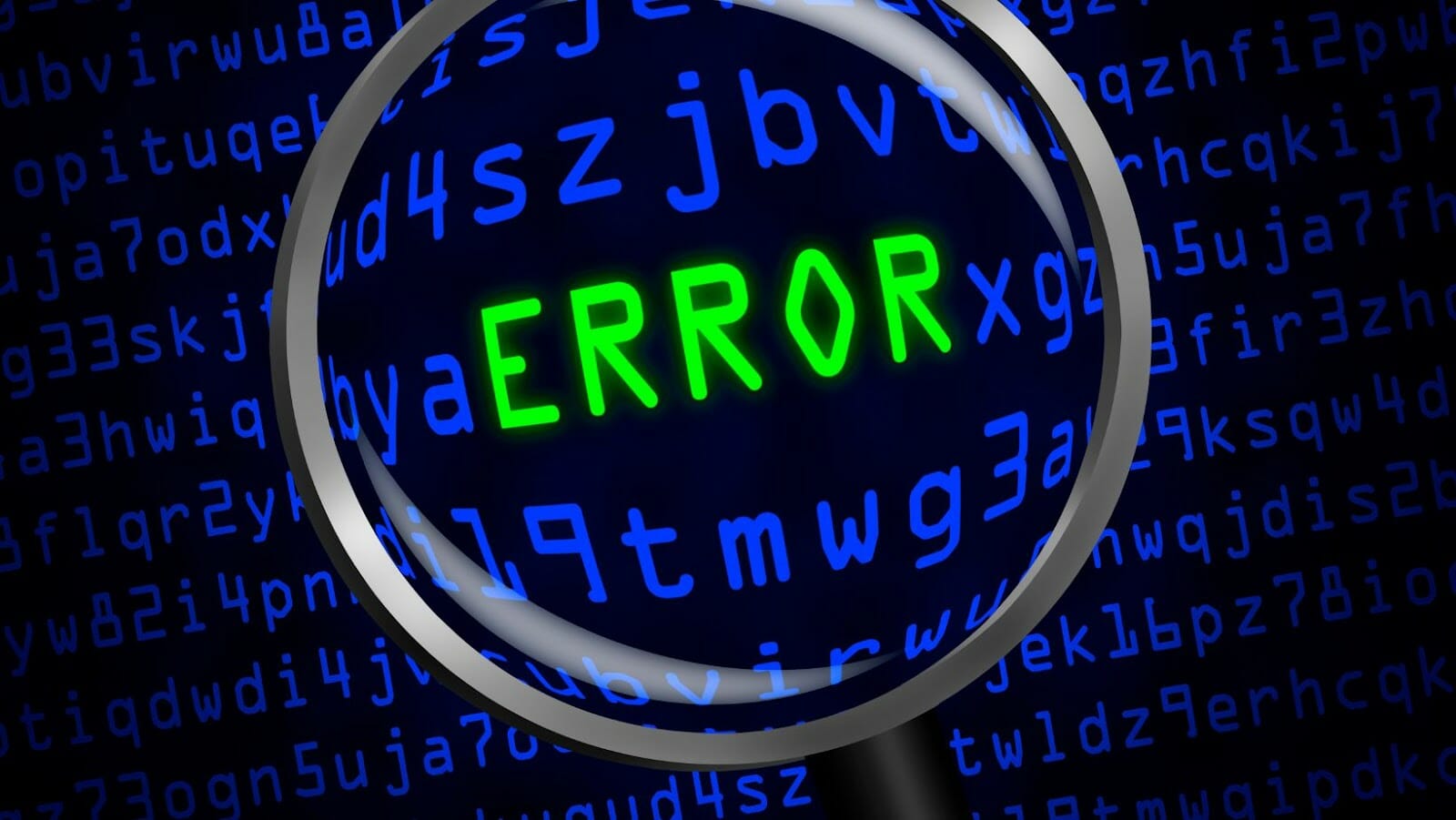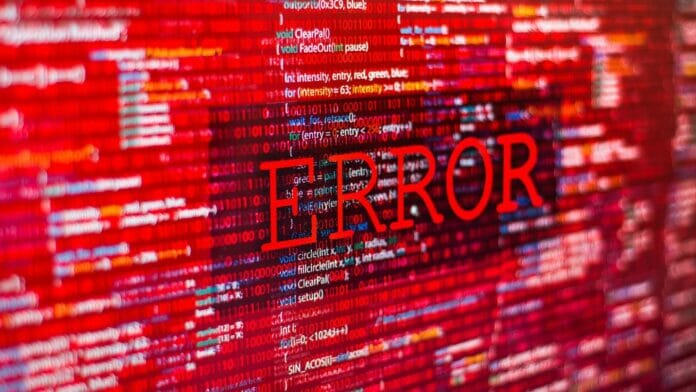001-$wag$-sfap49glta4b7hwyl5fsq-3802622129
When you encounter code errors during programming, there are a few that you dread seeing pop up on your screen. One of these codes is “001-$wag$-sfap49glta4b7hwyl5fsq-3802622129”.
This code error typically appears when there’s a problem with the program’s servers or systems, resulting in an inability to communicate with the database.
The best way to deal with this error is to wait a few minutes and try again. If the issue persists, reach out to the system administrator for help.
However, as intimidating as this error code may appear, it’s crucial not to panic. With the right approach, any code error can be resolved with ease.
Understanding the Error Code
Errors in code can be confusing and frustrating, especially if you don’t know what the specific error code is trying to tell you.
In this article, we’ll take a look at the error code 001-$wag$-sfap49glta4b7hwyl5fsq-3802622129 and what it could mean for your project. With an understanding of this code and why it’s appearing, you can better troubleshoot the issue and solve your coding problems.
Decoding the error message
As a programmer, you are bound to encounter error messages. Understanding what the error message means can help you troubleshoot and fix the issue at hand.
Here are some common error codes you don’t want to see and what they typically mean:
1. 404: Page Not Found – This error code means that the page you are trying to access cannot be found on the server. It could be due to a typo in the URL or a broken link.
2. 500: Internal Server Error – This error code indicates that there is a problem on the server-side that is preventing the website from functioning properly. It could be due to a coding error, outdated software, or insufficient resources.
3. 403: Forbidden – This error code means that you do not have permission to access the requested URL. It could be due to incorrect file permissions or a blocked IP address.
4. 504: Gateway Timeout – This error code means that the server is taking too long to respond to your request. It could be due to server overload or connectivity issues.
Understanding these error codes can save you time and help you fix the issue at hand.
Identifying the source of the error
Encountering an error message while coding can be frustrating, especially if you don’t understand the error code. However, identifying the source of the error can make troubleshooting and resolving issues easier.
Here’s how to decode an error message and identify its source:
Read the error message carefully, paying attention to the language and syntax used.
Look for keywords or phrases that might indicate the type of error, such as “syntax error,” “undefined variable,” or “unexpected token.”
Consult the programming language’s documentation or online forums to determine what the error code means.
Analyze the lines of code preceding the error to identify any syntax or logical errors.
Consider any recent changes you’ve made to the code and how they might be related to the error.
By identifying the source of the error, you can take the necessary steps to resolve it and optimise your code for better performance.
Pro tip: Taking time to troubleshoot and resolve error messages can improve your coding skills and help you become a better programmer.

Common reasons why error code occurs
Error codes can be frustrating to deal with and can halt your workflow. There are several common reasons why error codes occur that can help you better understand and troubleshoot them:
1. User Input Errors: Errors can occur if the input data provided by the user is incorrect or invalid.
2. Network Issues: Network connectivity problems can disrupt the flow of data and generate errors.
3. Software and Hardware Problems: Software conflicts, hardware malfunctions, and compatibility issues between operating systems and applications can cause errors.
4. Insufficient Permissions: Accessing a file or application without the necessary permissions can lead to errors.
5. System Resource Errors: Errors can occur if there is a lack of system resources such as RAM, CPU, or disk space required to complete the task.
Pro Tip: Documenting the error code and troubleshooting steps can help you resolve the issue quickly and efficiently in the future.
Troubleshooting the Error Code
Error 001-$wag$-sfap49glta4b7hwyl5fsq-3802622129 can be a difficult issue to tackle. It may appear as an unidentifiable code at first and cause confusion to the user when they encounter it. Looking into the specifics of this code can provide the key to unlocking its secrets and ultimately solving the problem.
Let’s dive into troubleshooting the error code.
Check database connection and credentials
Error Code “Unable to Connect to Database” is one of the most common issues that developers face while building web applications. The primary reason for this error is either the wrong database credentials or settings, or the failure of the database server to respond.
Here are the steps to troubleshoot this error:
1. Check the database credentials: Ensure that the database credentials used in the web application are correct. Check for any typos in the username, password, or database name.
2. Check the database settings: Verify that the database settings are correctly configured in the web application. Ensure that the hostname, port, and database type are all accurate.
3. Check the database server: Verify that the database server is up and running. Use an external tool such as MySQL Workbench or phpMyAdmin to connect to the database server to ensure that it’s responding.
With these steps, you should be able to diagnose and fix the “Unable to Connect to Database” error.
Analyze and debug the code
When you encounter an error code that you don’t want to see, the first step is to analyze and debug the code. Here’s how to troubleshoot common code errors:
1. Read the error message carefully and identify the type of error – syntax, runtime, or logical.
2. Check your code for typos or missing syntax, such as a missing semicolon or a mismatched parenthesis.
3. Use an Integrated Development Environment (IDE) or a debugger tool to step through the code and identify the line or statement that’s causing the error.
4. Consult online forums or documentation to see if others have encountered a similar error and found a solution.
Debugging code errors can be time-consuming and frustrating, but it’s an essential skill for any programmer. With perseverance and careful attention to detail, you can overcome even the most stubborn error codes.

Verify server and website configuration
When you encounter an error code that you don’t want to see, it’s crucial to verify your server and website configuration to troubleshoot the issue. Here are the steps to follow:
1. Check your server logs – Look for any errors or issues that may have occurred on your server.
2. Verify your website configuration files – Make sure all the settings in your website configuration files are correct.
3. Check your database connection – Ensure that your website can connect to your database.
4. Test your website – Try accessing your website to ensure that it is working correctly.
5. Look for any recent changes – Check if any recent changes made to your website or server caused the error.
Pro Tip: It’s always a good practice to keep a backup of your website and server configuration files. In case of an issue, you can quickly revert to the previous working version.
Resolving the Error Code
An error code is a message displayed by a program that informs the user about a software bug. The specific error code in question is 001-$wag$-sfap49glta4b7hwyl5fsq-3802622129 and it can be a difficult one to diagnose.
Fortunately, there are some strategies to help you identify the problem and resolve it. In this article, we will cover the steps to resolve this particular error code.
Updating the database configurations
Updating the database configurations is crucial to resolve the error code that you don’t want to see. When configuring a database, many factors come into play, including database engine, hardware components, and database design. One of the typical errors that occur when database configurations are not done correctly is “Code Error you don’t want to see”. The error commonly indicates that the database is running out of necessary resources or that the configurations are misconfigured, requiring the updating of the configuration settings.
To resolve the error code, update the database configurations, ensure that the necessary resources are available and correctly allocated, analyze the database design, and update it as needed. Also, ensure that the database engine and all components are up to date and free of any errors. It is vital to test the updates in a controlled environment before rolling them out to production to minimise any potential downtime.
Pro Tip: Always document the changes made, relevant configuration settings, and the impact to streamline troubleshooting and debugging processes in the future.
Fixing the code issue
Fixing code issues can be a frustrating experience, especially when it comes to error codes that you don’t want to see. However, the following tips can help you resolve these errors:
1. Research the error code online: Before attempting to fix the code issue, it’s essential to understand what the error message means. A simple Google search can provide valuable insight into the error and potential solutions.
2. Check the code for syntax errors: One of the most common reasons for error codes is syntax errors in the code. Check the code for any typos, missing or misplaced punctuation marks, and incorrect syntax.
3. Analyze your code for logical errors: If syntax errors aren’t the issue, then there may be logical errors in your code. Go through your code line by line, checking for errors in the logic of the program.
4. Debug your code: Use a debugger to identify problems and fix code issues. This tool can help pinpoint the exact location or line of code causing issues.
Remember, fixing code issues takes time, patience, and practice. With some effort, research, and debugging, you can resolve even the most challenging code issues.
Pro Tip: Always backup your code before making any changes to ensure that you don’t lose any code in the process.

Applying security measures to prevent future errors
When it comes to resolving a code error that you don’t want to see in the future, applying the right security measures can play a significant role. Here are some techniques that you can utilise to prevent future errors:
1. Implement a backup system: Errors can occur anytime, and a backup system can help you save your time and effort by restoring your files and data quickly.
2. Use an antivirus: Keeping your computer safe from malware and viruses is crucial to prevent potential errors.
3. Regular maintenance: Conducting disk cleanup, disk defragmentation, and updating software regularly can avoid potential errors.
4. Limit user access: Restricting access to sensitive files and data by permission settings can help prevent unauthorised access and reduce the risk of errors.
5. Install a firewall: A firewall can protect your system by filtering incoming traffic and block any potential threat.
Applying these security measures can protect your system and prevent future errors, and can save you from unwanted downtime and effort.
Preventing the Error Code
Error code 001-$wag$-sfap49glta4b7hwyl5fsq-3802622129 can be an annoying and frustrating issue if you don’t know how to prevent it. It normally appears when you’re dealing with multiple systems and components and is a sign that something may be wrong with your code.
To help you get ahead of this issue and prevent it from happening, here are some tips and tricks you can try.
Conducting regular updates and maintenance
Regular updates and maintenance are key to preventing the Error Code – Code error you don’t want to see.
This error code is often caused by outdated software, plugins, or themes, as well as conflicts between different elements of your website’s code.
To prevent this error code, you should conduct regular updates of your website’s software and plugins, ensuring that they are all compatible and up-to-date.
Additionally, you should regularly check your website for broken links, missing files, and other issues that could trigger the error code.
By performing these regular updates and maintenance tasks, you can ensure that your website runs smoothly and avoid the dreaded Error Code – Code error you don’t want to see.
Strengthen website and server security
Strengthening your website and server security is crucial to prevent the error code you don’t want to see, which can lead to data breaches, website crashes, and loss of valuable information.
Here are some tips to improve your website and server security:
Install security plugins and software that detect and block potential threats, malware, viruses, and spam.
Use HTTPS protocol and SSL certificates to encrypt data and protect sensitive information such as passwords, credit card numbers, and personal details.
Keep your software, plugins, and applications updated to patch security vulnerabilities and prevent hackers from exploiting them.
Use strong passwords and multi-factor authentication to prevent brute-force attacks and unauthorised access to your website and server.
Regularly backup your data and store it offsite to prepare for worst-case scenarios such as ransomware attacks or server crashes.
Following these best practices will help you prevent the error code you don’t want to see and keep your website and server secure from potential threats.
Pro tip: Remember to educate yourself and your team on the latest security threats and how to prevent them to stay ahead of potential attackers.
Seeking professional assistance for complex errors
Preventing error codes is crucial to ensure the smooth functioning of your devices or systems. However, complex errors may arise that require professional assistance to resolve.
Here are some scenarios where seeking professional help is necessary:
1. System crashes or hardware failure: If your system crashes or you experience hardware failure, it is best to seek professional assistance as these issues require expertise and technical knowledge to resolve.
2. Unfamiliar error codes: If you encounter error codes that you are not familiar with or do not know how to resolve, it is best to contact a professional who can diagnose the issue and provide a solution.
3. Data loss or corruption: If you experience data loss or corruption, it is best to seek professional help to avoid further damage to your data and ensure data recovery.
Remember, attempting to resolve complex errors without technical knowledge can result in further damage and data loss. Seeking professional assistance can help prevent the error code you don’t want to see.


